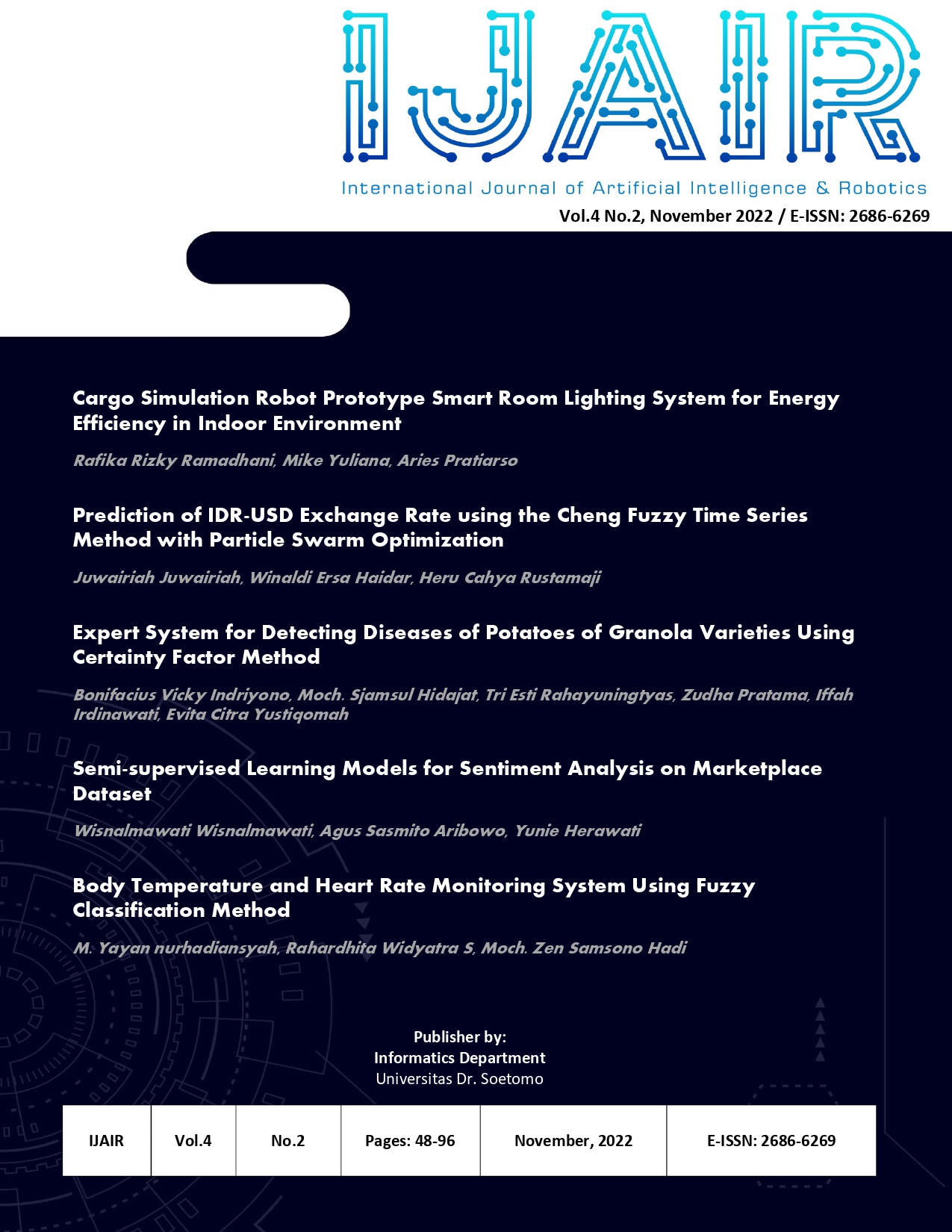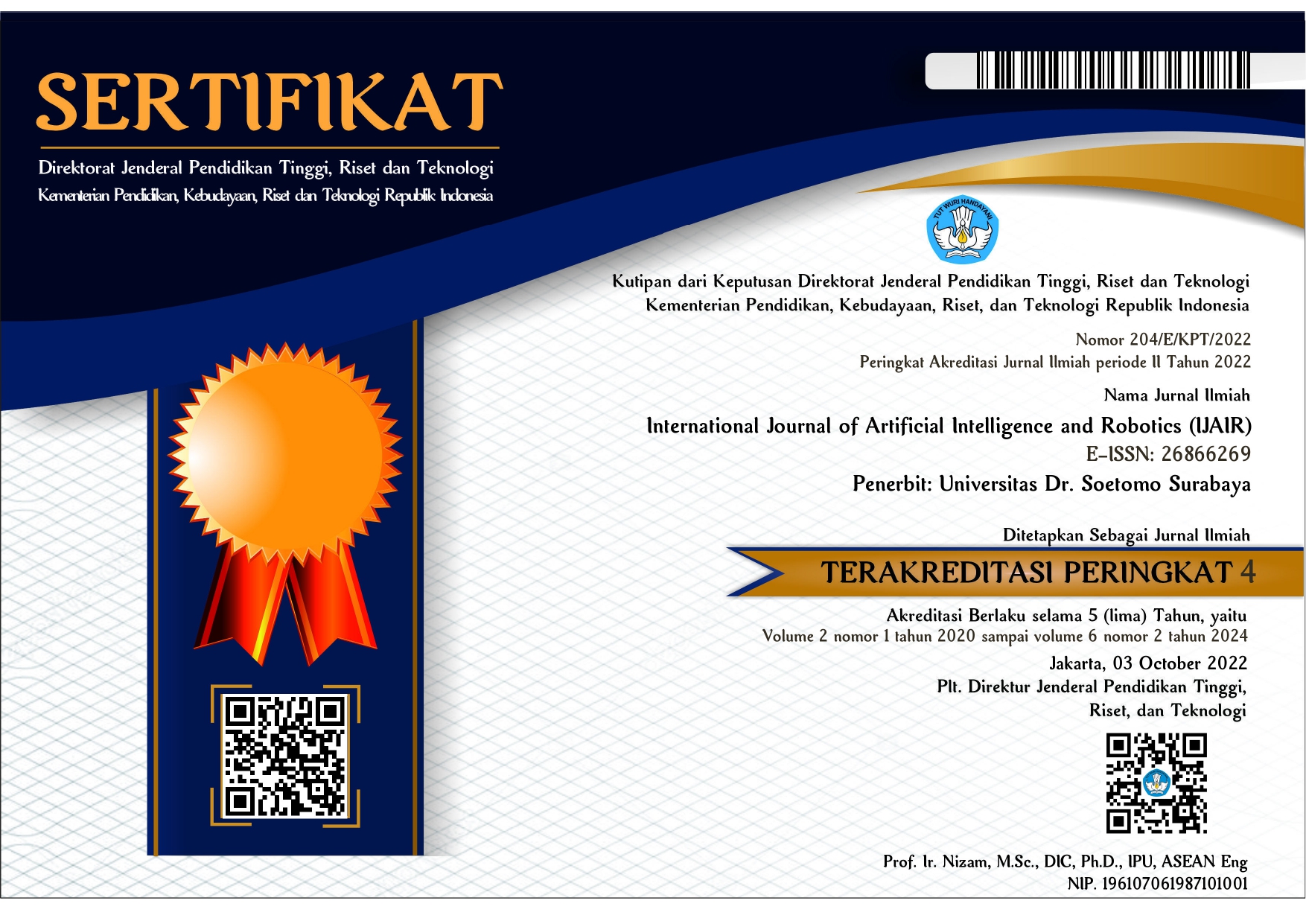Body Temperature and Heart Rate Monitoring System Using Fuzzy Classification Method
 Abstract views: 509
,
Abstract views: 509
,
 PDF downloads: 311
PDF downloads: 311
Abstract
Climbing becomes one of the extreme sports that test endurance with nature, just like in a mountainous environment. In addition to the excitement and fun that climbing provides, climbers enjoy the opportunity to view breathtaking natural scenery and breathe in the fresh air drawn directly from the surrounding environment. Because of the temperature in the cold mountains, there are frequent and common obstacles Not realized by the climbers, such as hypothermia. Hypothermia is a condition in which the body temperature drops below 35oC. When body temperature is below normal 37oC, nervous system function and other body organs will experience interference. If not soon Left untreated, hypothermia can lead to heart failure, disturbances respiratory system, and even death. To anticipate things requires a system that functions to know the condition of mountaineer health. The system to be created uses the Mamdani fuzzy logic method, which decides whether the climber is healthy. The fuzzy logic method is used for decision-making based on body temperature and heart rate values. Implementation of the system in the form of a prototype containing sensors and mini-computers located at the climbing post, with data transmission using a node sent from post x to the main post to be uploaded to the database so that it can be known by the admin or rescue team when climbers need help in critical situations. This is done so that the condition can be monitored.
Downloads
References
I. F. Sukamto, “Pengetahuan Tentang Penanganan Hipotermi pada Pendaki Gunung di Wana Wisata Cemoro Sewu, Gunung Lawu, Magetan,” pp. 97–101, 2019.
S. Arif et al., “Detektor kondisi pendaki gunung berbasis arduino uno,” PROSIDING SEMINAR NASIONAL RISET TEKNOLOGI TERAPAN, 2020, pp. 1-7.
F. A. Ramadhan, R. Maulana, and W. Kurniawan, “Rancang Bangun Pengontrolan Suhu Pada Sleepingbag Sebagai Tindakan Pencegahan Pada Penderita Hipotermia,” J. Pengemb. Teknol. Inf. dan Ilmu Komput. Univ. Brawijaya, vol. 2, no. 10, pp. 3411–3420, 2018.
W. Cahyadi, A. R. Chaidir, and F. Anda, "Penerapan Logika Fuzzy Sebagai Alat Deteksi Hipotermia dan Hipertermia pada Manusia Berbasis Internet of Thing ( IoT )," vol. 17, no. 2, pp. 94–99, 2021, doi: 10.17529/jre.v17i2.15670.
H. U. Nuri, "Sistem Cerdas Monitoring Kesehatan Korban Bencana Alam Dengan Metode Fuzzy Logic Berbasis Sistem Komunikasi Lora," In Intelligent System For Natural Disaster Victims Health Monitoring Using Fuzzy Logic Method Based On Lora Communication System, Surabaya, PENS, 2021, pp. 1-123.
Maxim Integrated, "Pulse Oximeter and Heart-Rate Sensor IC for Wearable Health," Lect. Notes Energy, vol. 38, pp. 1–29, 2014.
I. T. Yuniahastuti, I. Sunaryantiningsih, and B. Olanda, “Contactless Thermometer sebagai Upaya Siaga Covid-19 di Universitas PGRI Madiun,” ELECTRA Electr. Eng. Artic., vol. 1, no. 1, p. 28, 2020, doi: 10.25273/electra.v1i1.7597.
Copyright (c) 2022 M. Yayan Nurhadiansyah

This work is licensed under a Creative Commons Attribution-ShareAlike 4.0 International License.
Authors who publish with International Journal of Artificial Intelligence & Robotics (IJAIR) agree to the following terms:
-
Authors retain copyright and grant the journal right of first publication with the work simultaneously licensed under a Creative Commons Attribution License (CC BY-SA 4.0) that allows others to share the work with an acknowledgment of the work's authorship and initial publication in this journal.
-
Authors are able to enter into separate, additional contractual arrangements for the non-exclusive distribution of the journal's published version of the work (e.g., post it to an institutional repository or publish it in a book), with an acknowledgment of its initial publication in this journal.
-
Authors are permitted and encouraged to post their work online (e.g., in institutional repositories or on their website) prior to and during the submission process, as it can lead to productive exchanges, as well as earlier and greater citation of published work.















